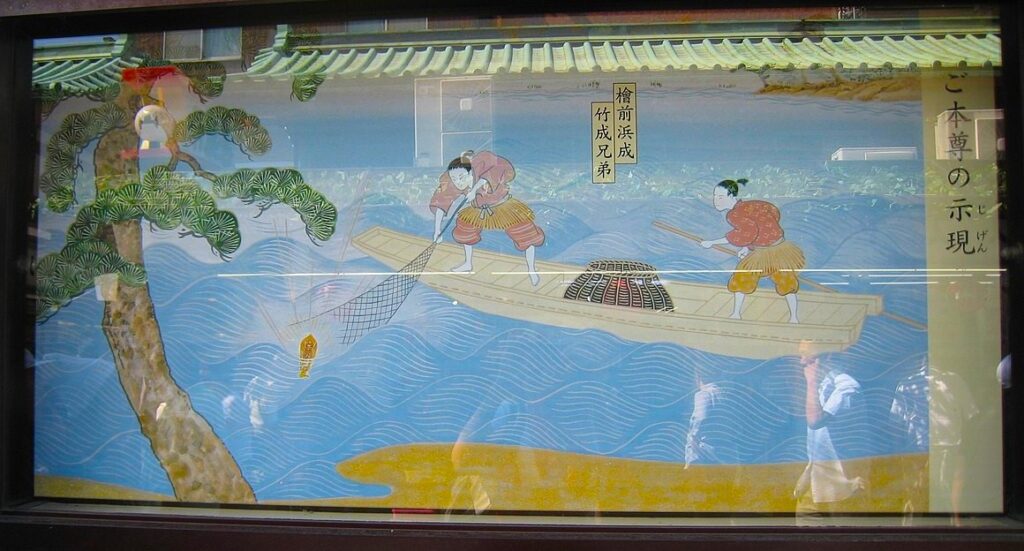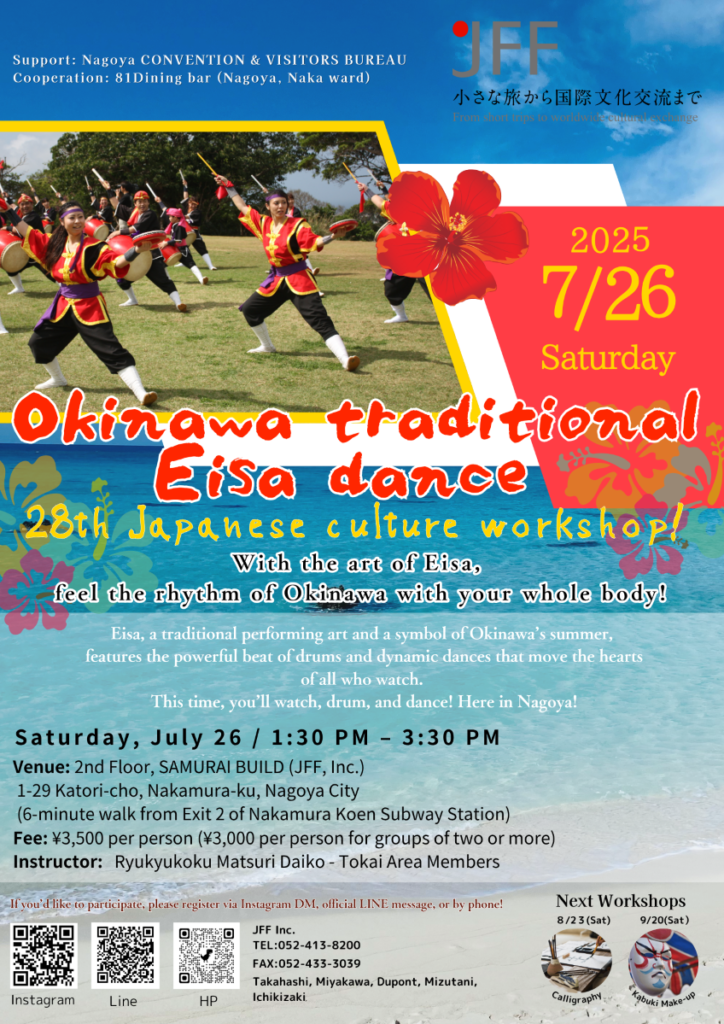SAMURAI BUILD 2F,
1-29 Katori-cho, Nakamura-ku,
Nagoya, Aichi Prefecture, Japan
ASAKUSA and TOKYO SKYTREE: a trip from Tokyo’s oldest Geisha district till the clouds
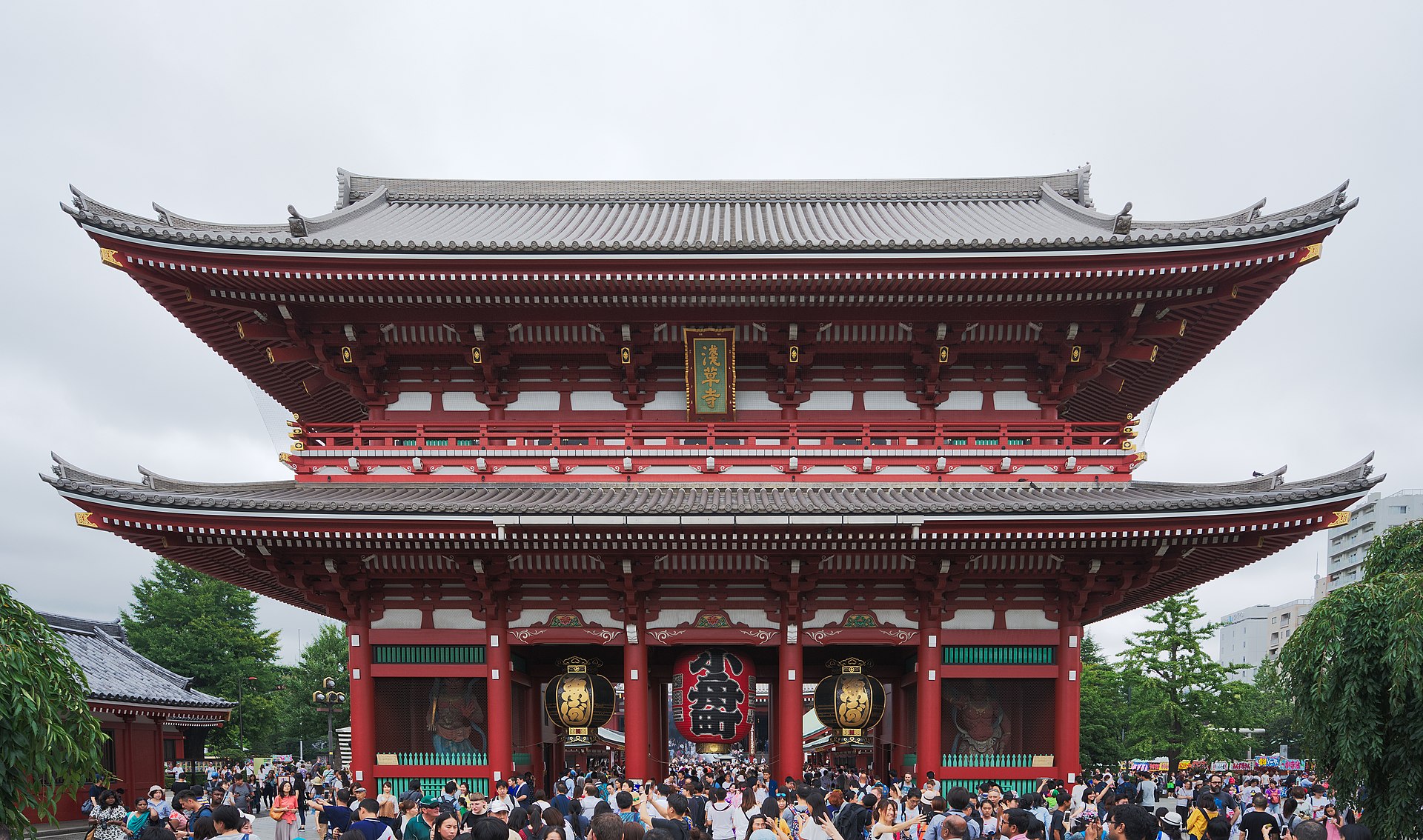
Asakusa is the center of Tokyo’s Shitamachi District (literally “low city District”) featuring temples, rickshaws, crafts, ancient shops and Kimono. Here you can feel the nostalgic atmosphere of the ancient Edo-Era when Asakusa Park (the area surrounding Sensō-ji Temple) became Tokyo’s main entertainment district populated by merchants, artisans and samurai.
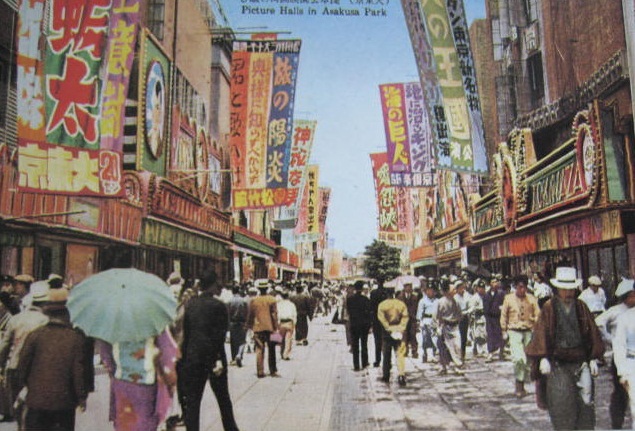
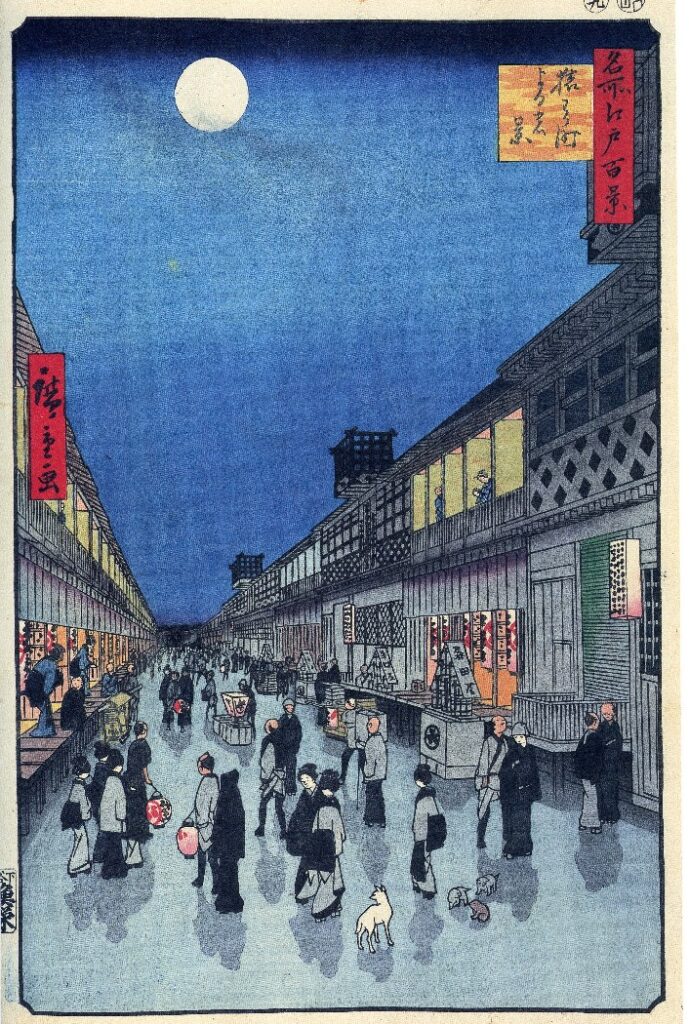
Rokku Broadway (The Sixth District) is a 300 m-long street and during the Edo Period it was the biggest theater district in Japan, filled with theaters and amusement facilities.
Asakusa was rebuilt after being destroyed by the air raids during the World War II but the Sixth District did not gain the same popularity as before.
Asakusa District has a lot of green areas offering you peaceful breaks, moreover you can enjoy a pleasant promenade on Sumida River Walk or Azuma-Bashi Bridge, two pedestrian bridges that connect the historical neighborhood of Asakusa to the Skytree area.
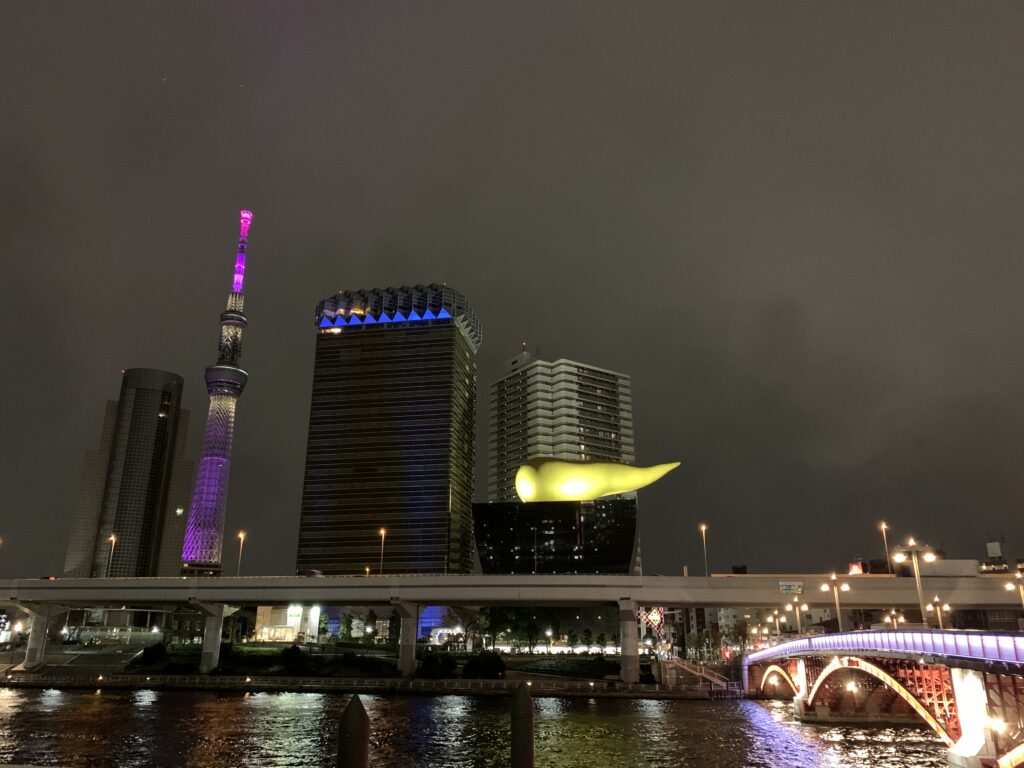
Moreover, a lot of traditional festivals and events born in this area have survived till today such as the well-known Sanja Matsuri in May and the Sumida River Fireworks in July which is very popular both throughout Japan and abroad as well.
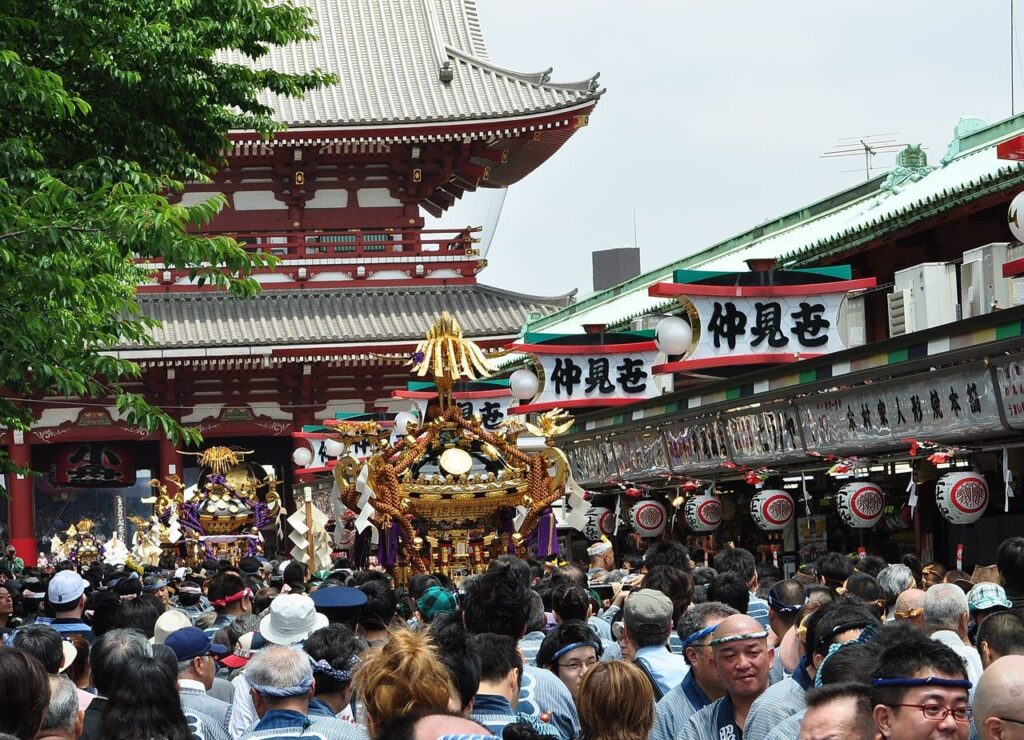
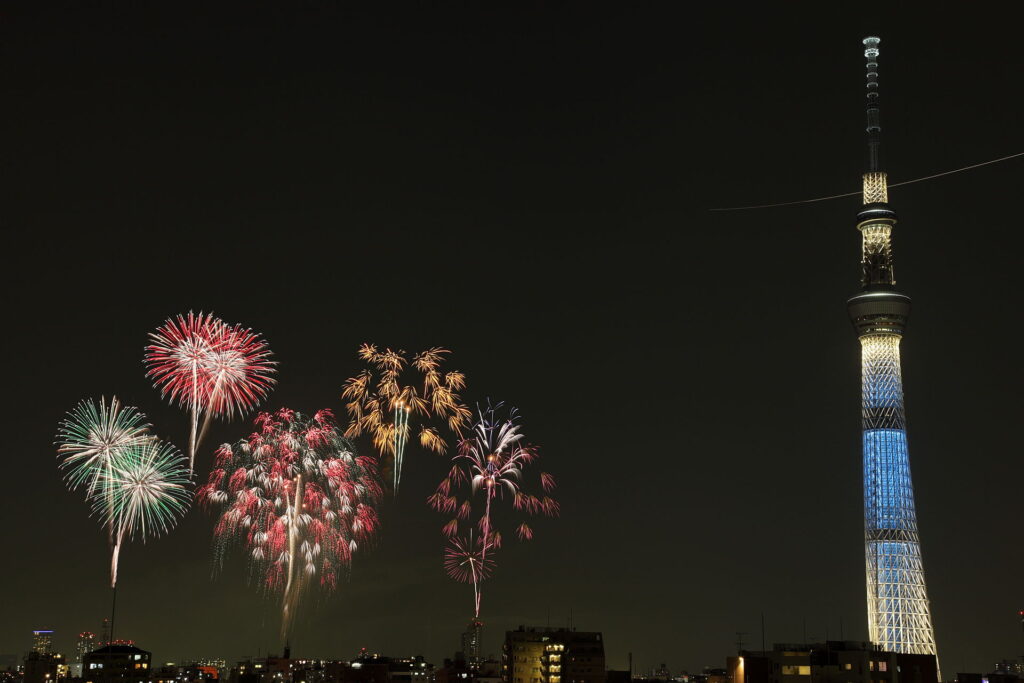
Sensō-ji: the oldest Temple in Tokyo
Sensō-ji is a Buddhist Temple built in 645 A.D by Taira no Kiyomasa and it is located in Asakusa historical area. This colorful Temple is loved all over the world as Tokyo’s most famous landmark and it is dedicated to Kannon, the deity of compassion and mercy. It has been associated with the Tendai Sect of Buddhism till World War II, when it became independent.
According to a legend dating back to 628, two brothers discovered a golden statue of Kannon in the Sumida River while fishing. The Asakusa village chief decided to build a Temple in order to keep the statue safe and worship it. Since then, a lot of pilgrims coming from the whole country, came to the Temple in order to pray in front of Kannon deity.
Structure
Kaminarimon
When approaching Sensō-ji, the first thing that you will see is the outstanding Kaminarimon (Thunder Gate) with its giant red chōchin (lantern). On both sides are displayed the statues of the Shinto gods Fujin (God of Wind) and Raijin (God of Thunder). Fujin is located on the east side of the gate while Raijin is located on its west side. On the opposite side, Kaminarimon hosts other two Buddhist God statues, Tenryu and Kinryu, with a total of four statues.
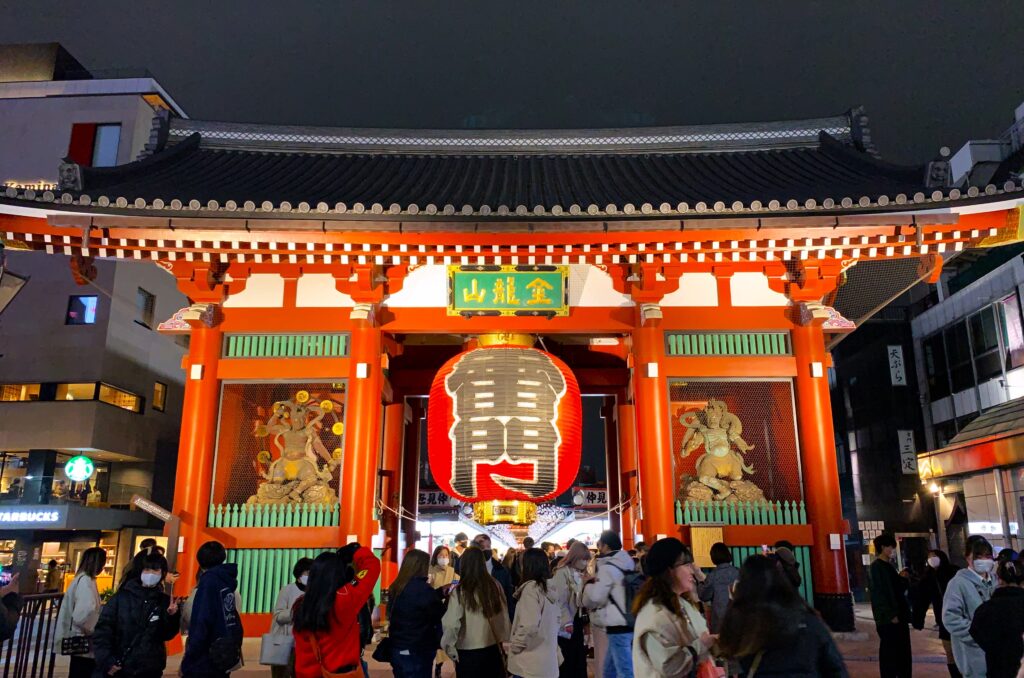
Nakamise-Dori Shopping Street
After passing through the imposing Kaminarimon Gate, walk along Nakamise-Dori Shopping Street. This is a 250-meter long street leading from the Kaminarimon Gate to the Hozomon Gate and on both sides it is lined with 89 shops in total among souvenir shops and various food stalls! So, why not tasting delicious traditional food while enjoying this lively atmosphere? You have plenty of choices, sushi, yakitori, osenbei (Japanese crackers), cute and unusual sweets and more!

Hōzōmon Gate and the five-stored Pagoda
The imposing Hōzōmon Gate stands at the end of Nakamise-Dori Street. This is a two-story gate housing two guardian statues, each one located respectively on the left and on the right side of the gate. The statues represent Niō, the guardian deities of the Buddha. Hence, Hōzōmon Gate was previously called Niōmon (literally Niō Gate). The central part of the first story features three lanterns that are removed during Sanja Matsuri. The central one is a giant red chōchin and the other two on its side are toro copper lanterns.
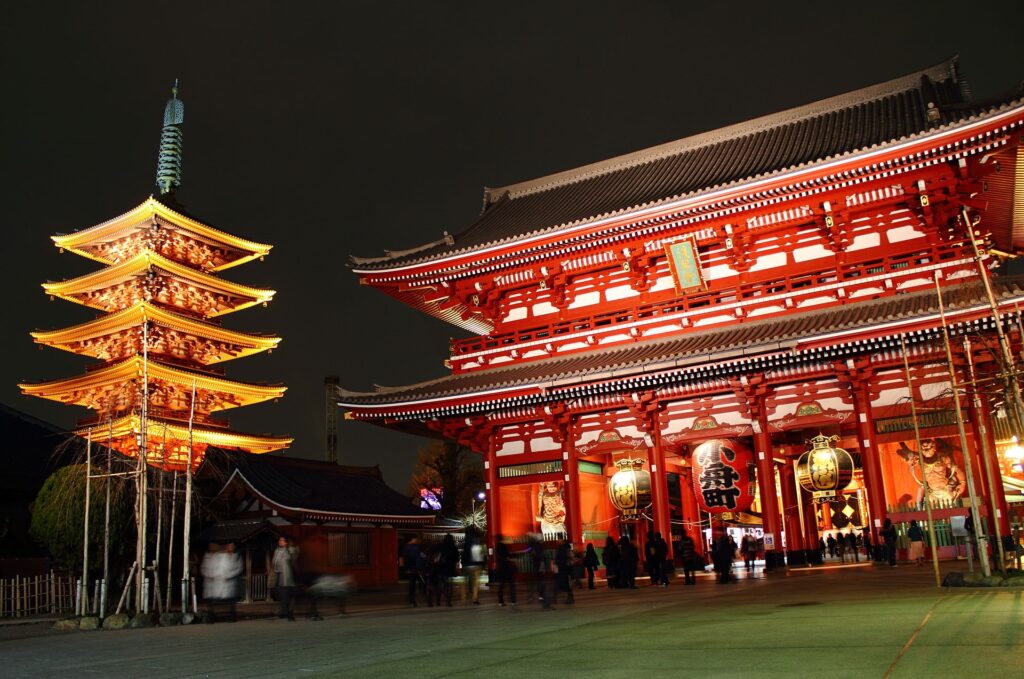
Sensō-ji Temple’s five-stored Pagoda is one of the most famous in Japan and it is 53 m-high. Its construction dates back to 942 but, after being destroyed by fire, it was rebuilt in 1973.

The Main Hall and the incense burner
Beyond the Hōzōmon Gate you will see the Main Hall housing the golden statue of Kannon which was, according to the legend mentioned before, found by the two brothers while finishing. In front of the Main Hall there is a huge bronze incense burner, tourists gather around it and breath the incense since it is said that it has a healing power and purify worshippers before praying.
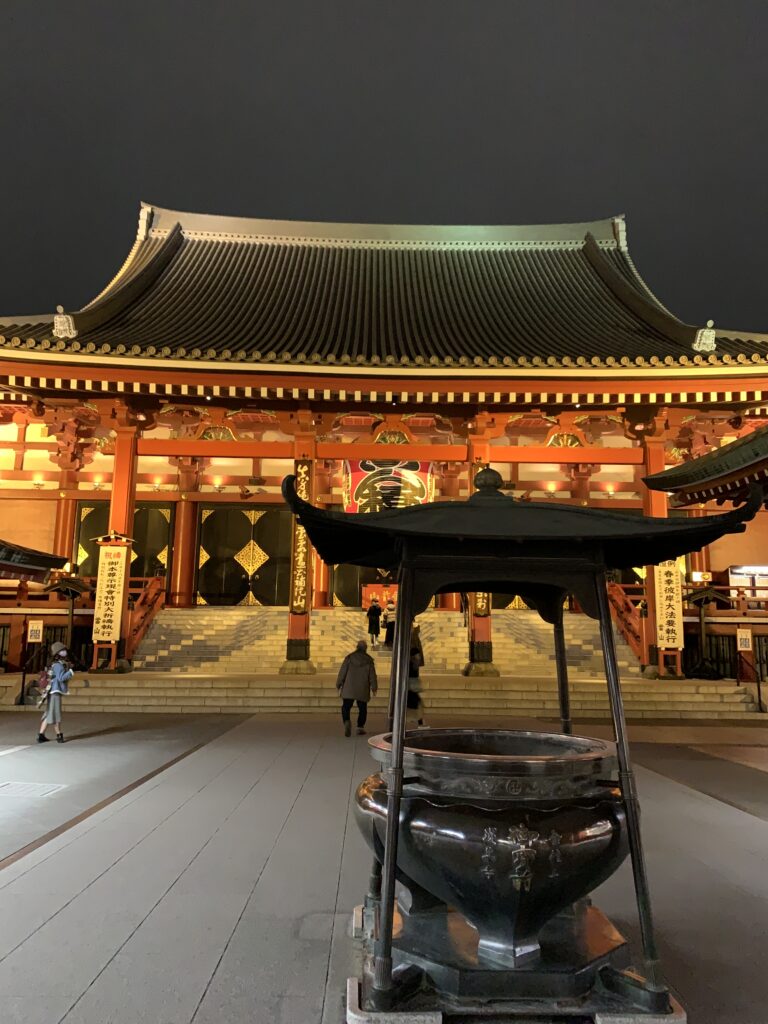
Tokyo Skytree: soaring above the clouds
Tokyo Skytree is an observatory deck that offers an incredible panoramic view at 360-degree over Tokyo. Moreover, it is built using the same principle as Pagodas and, with its 634 m., Tokyo Skytree is the tallest broadcasting tower in the world!
There are 2 observatory deck: the first one is Tembo Deck, which develops on three floors at 340, 345, and 350m featuring restaurants and cafe. From above it is possible to see Tokyo’s landmarks such as Sensō-ji and most important buildings and, if the weather is good, you can also see Mt. Fuji! The second one is Galleria Deck, which is higher but smaller and spreads over two floors at 445 450m).

Why 634 m?
According to the old Japanese numbers, the pronunciation of “634” is respectively “mu-sa-hi” which reminds of Musashi, the former province of Tokyo.
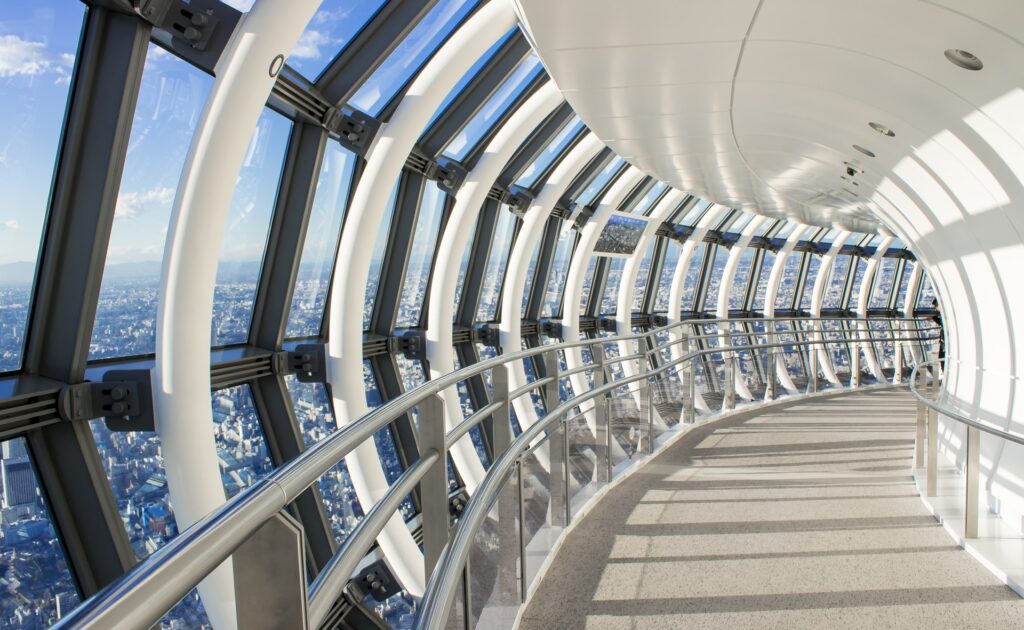
- category: Tokyo

